As you create a new Contact List or choose to run a secondary import for an existing Contact List, you will be redirected to the Contacts Import Screen.
In this article, we take you through the various steps involved in the import process and explain how import rules impact the data you import into the MainBrainer CRM.
Step 1
Upload a CSV file
The MainBrainer CRM supports Contact imports via CSV files. Drag and drop the .csv file you wish to import to the area highlighted in the screenshot below. Or, click the icon to upload the .csv file.
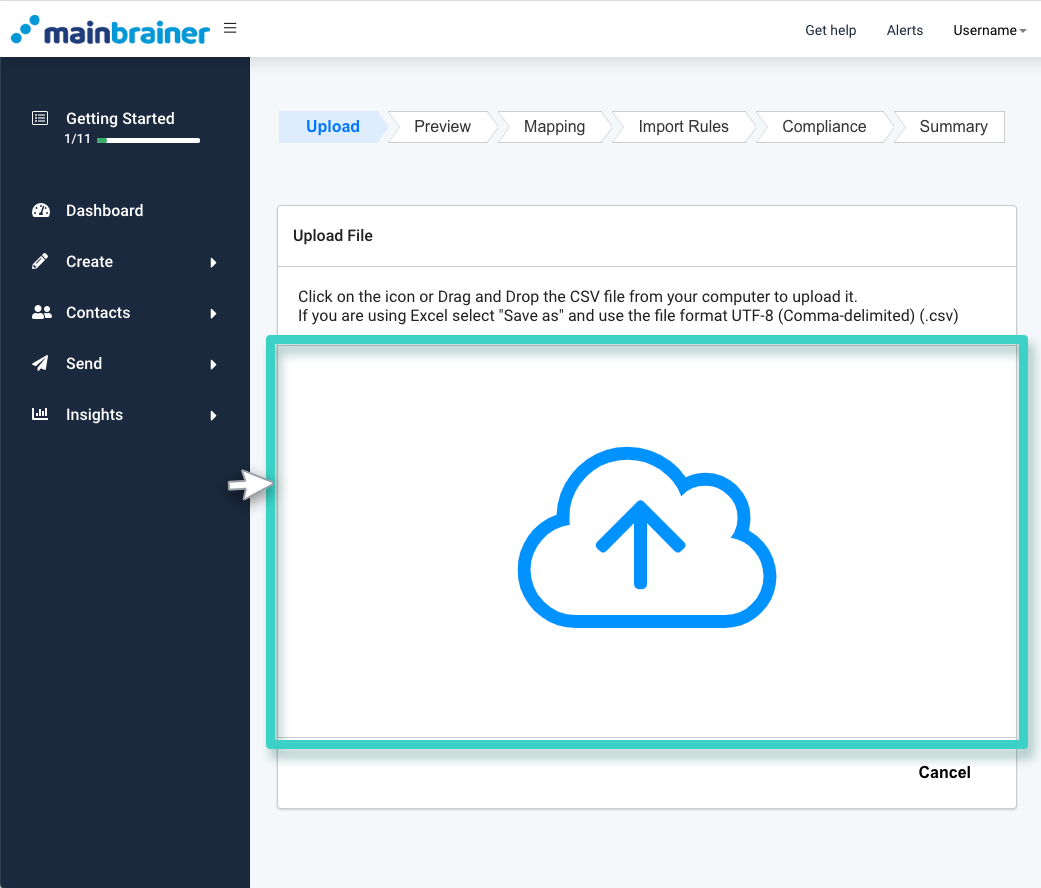
Step 2
Preview your Import data
The subsequent screen will display a preview of the first 100 Contacts from the CSV file that you are importing. In case the first row of the file that you are importing contains header data, remember to mark the checkbox (as highlighted in the screenshot below).
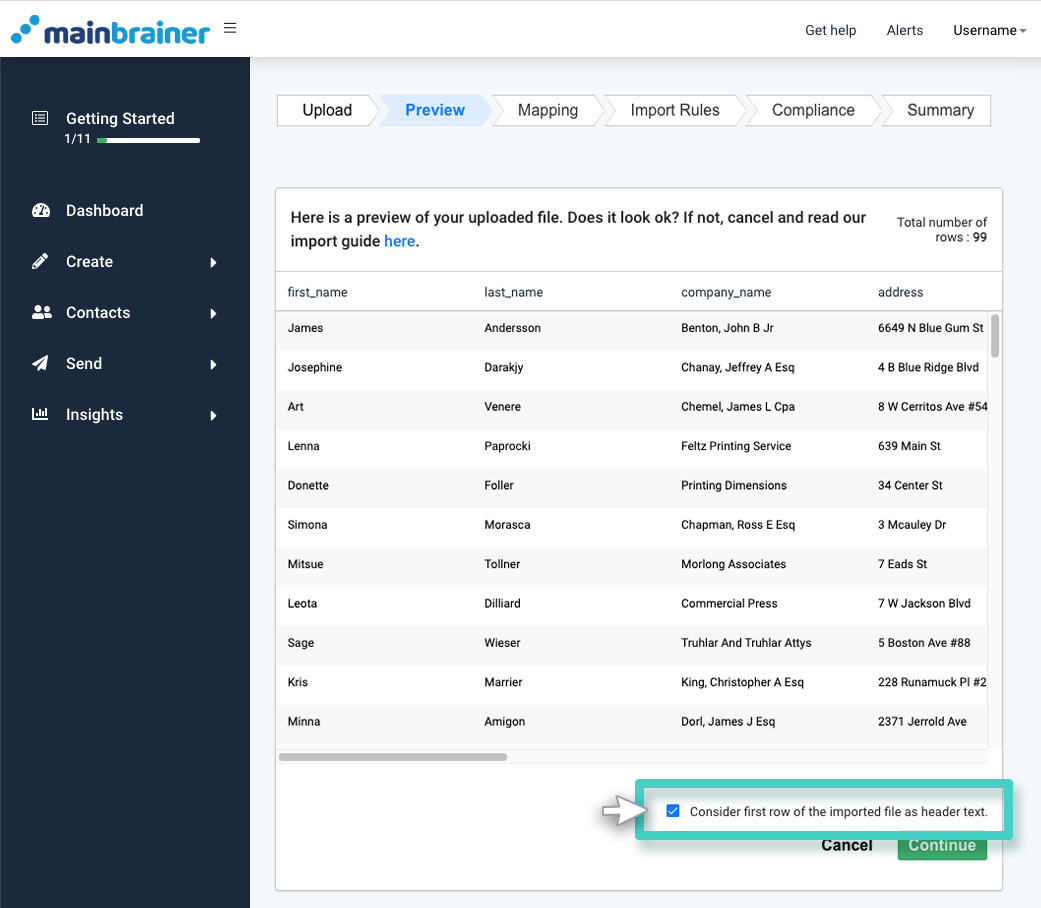
Click Continue to proceed with the import.
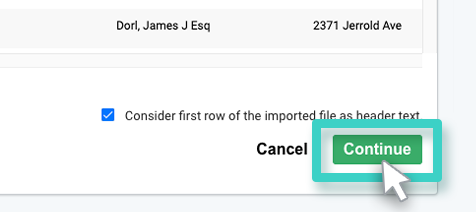
Step 3
Map the Imported Data to appropriate CRM columns
On the Mapping screen, you will be prompted to map the columns in your import file to the relevant field in the MainBrainer CRM. The entries under the heading Column Name represent the columns in your import file. The entries under the heading Map to field represent the fields available in the MainBrainer CRM.
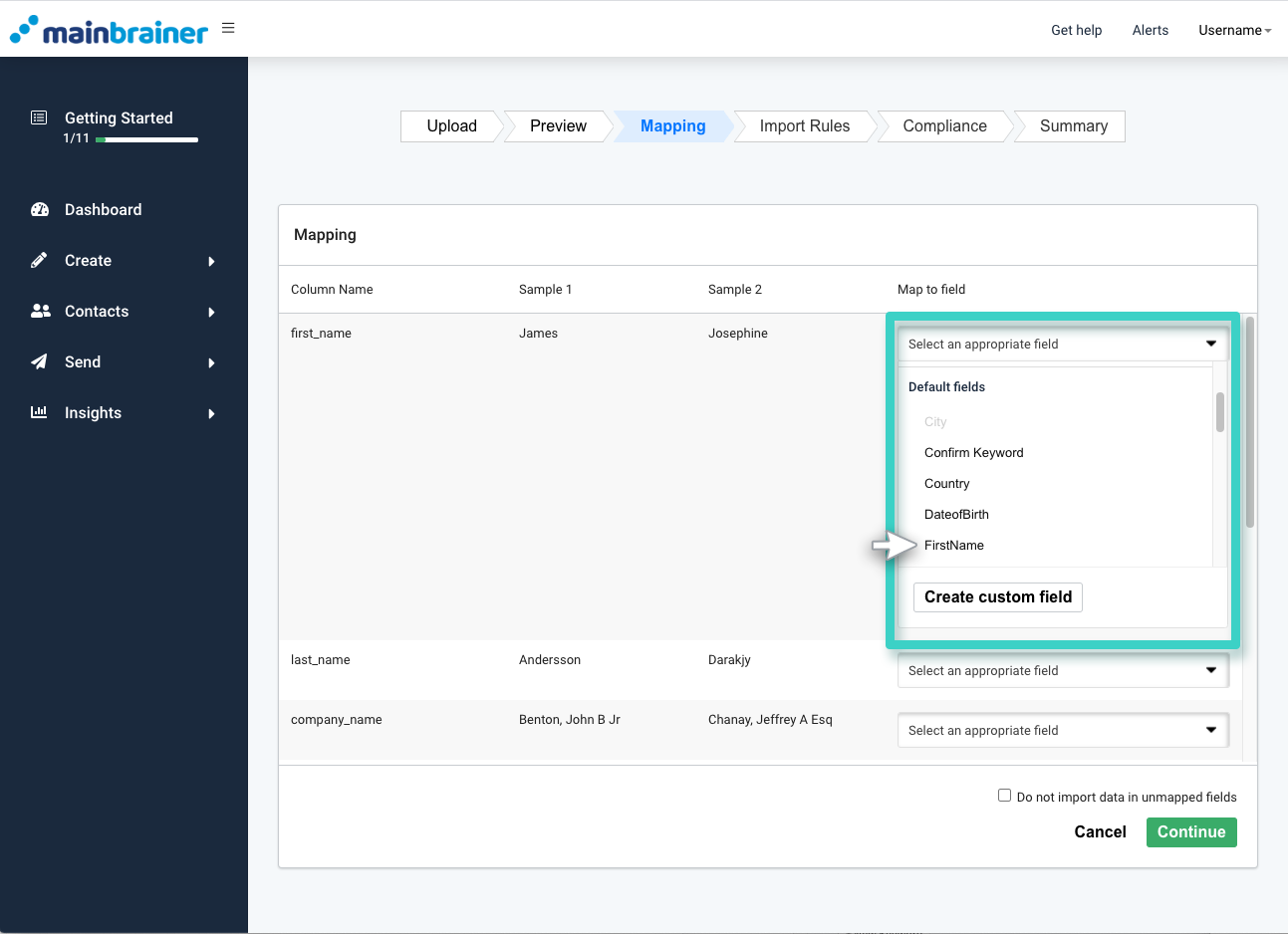
Here, you need to specify which columns in your import file correspond to the relevant field in the MainBrainer CRM. To do that, use the dropdown under the heading Map to Field corresponding to that field (as highlighted in the screenshot above). The dropdown will display all the CRM fields available for mapping. In case you wish to map the data to a custom field, click the Create Custom Field button in the dropdown. If you wish to skip the import of any column, use the option Don’t import this column in the dropdown menu.
In case you wish to skip the import of multiple columns from your import file, you can skip mapping those fields and mark the Do not import data in unmapped fields checkbox (highlighted in the screenshot below) to skip their import.
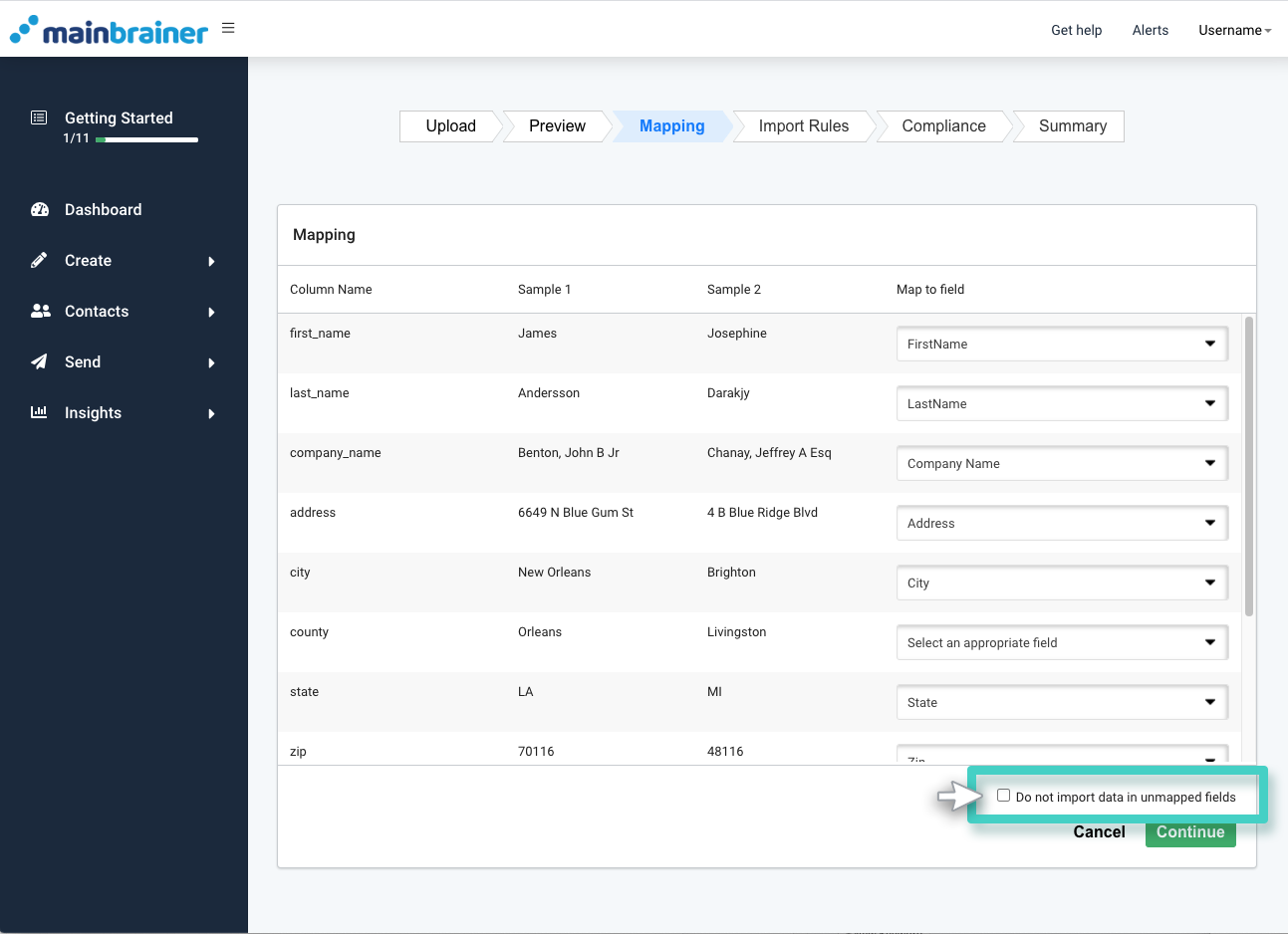
Subsequently, click Continue to proceed.

In case you map the Email address/mobile number field, you also need to specify the respective opt-in/opt-out status. In case you don’t, you will be prompted to do so on the next screen.
By default, the values for the opt-in status fields (i.e., the fields – SMS Marketing and Email Marketing) need to be passed as:
- True/Yes for Contacts who have opted in, and
- False/No for Contacts who have opted out.
Note: We understand that the data you wish to import might contain the opt-in status with different terminology, say OptIn for Contacts who have opted in and OptOut for those who have opted out. In such cases, you can edit the field settings of the CRM’s opt-in status fields in accordance with your data.
Step 4
Specify the Import rules
On the subsequent Import Rules screen, you’ll need to specify the import rules, i.e., the basis on which data you would like to identify and handle duplicates.
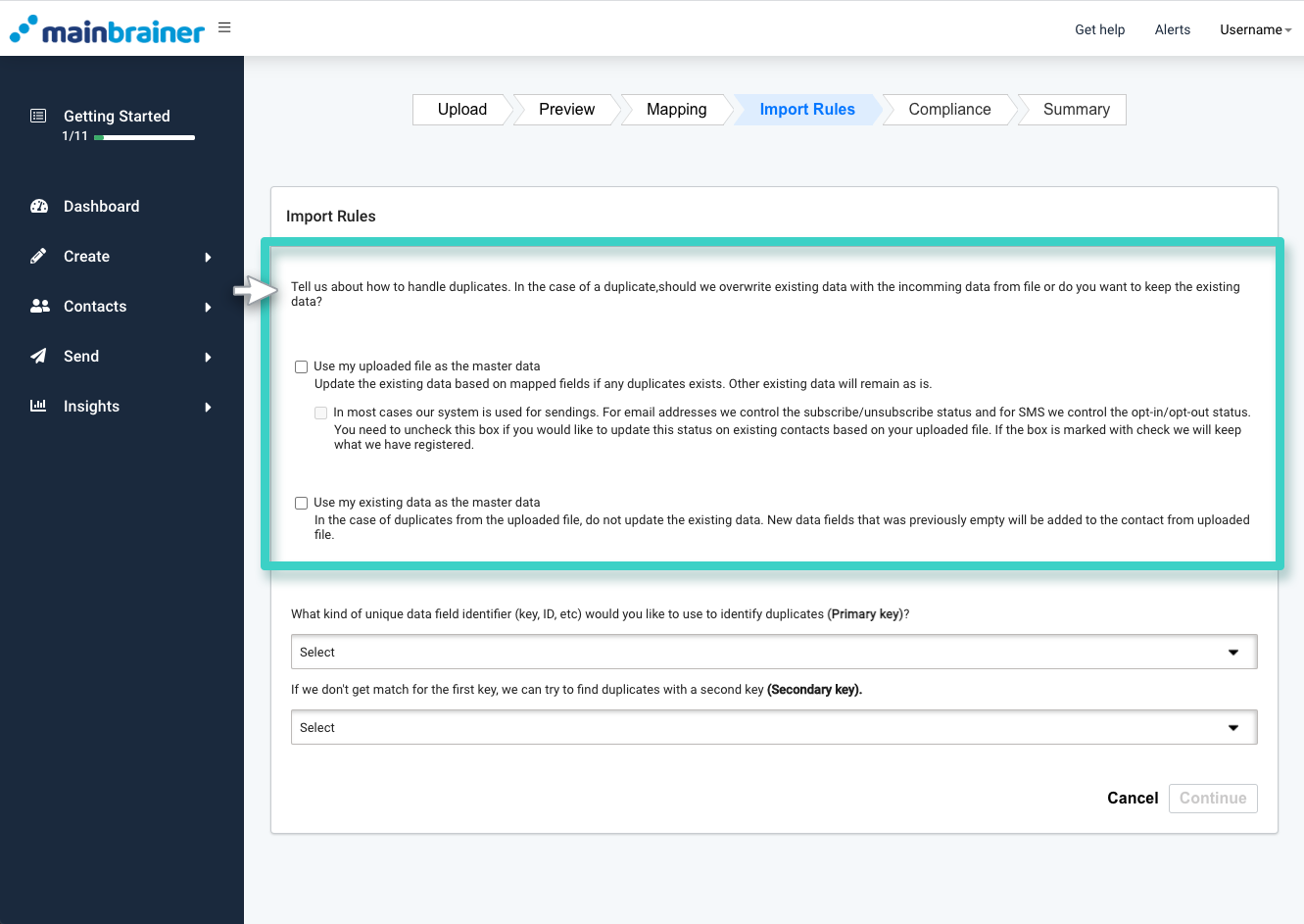
-
Use my uploaded file as the master data
Check the box highlighted in the following screenshot if you want to treat the file being imported as the master data. If you do so, any duplicate data in the CRM will be updated as per the imported data.
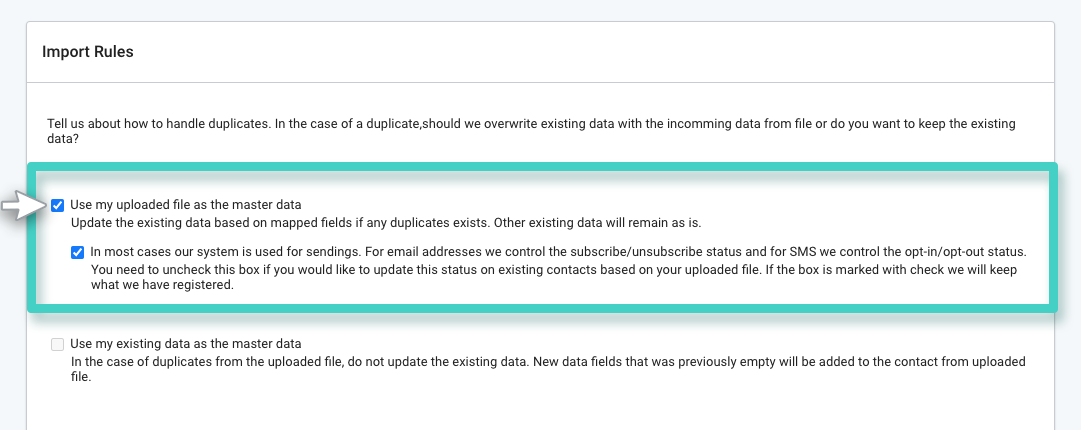
-
Use my existing data as the master data
Check the following highlighted box if you want to treat the pre-existing data in the CRM as the master data. If you do so, any duplicate data in the import file will not be updated in the CRM. New data fields if any (that is, the fields which previously did not contain any data in the CRM) will be added to the CRM.
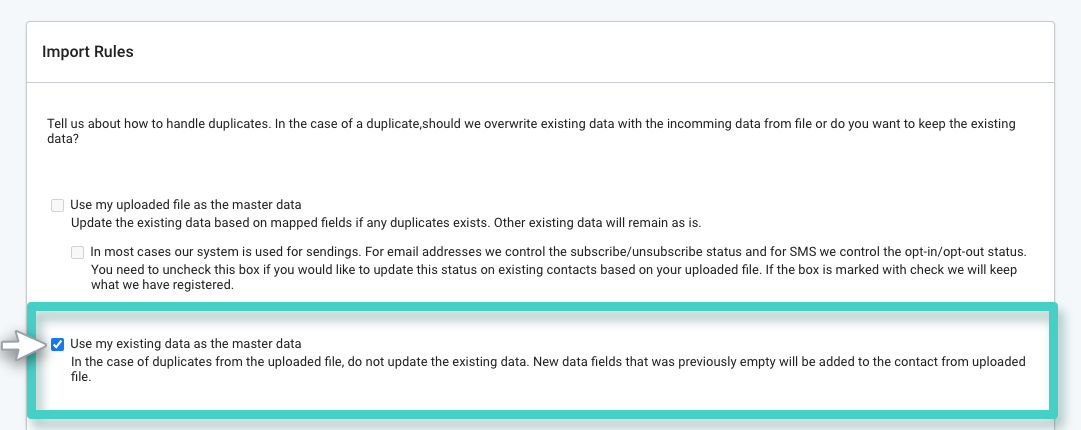
Next, you’ll need to specify the field(s) you wish to use as the primary and secondary keys for the import.
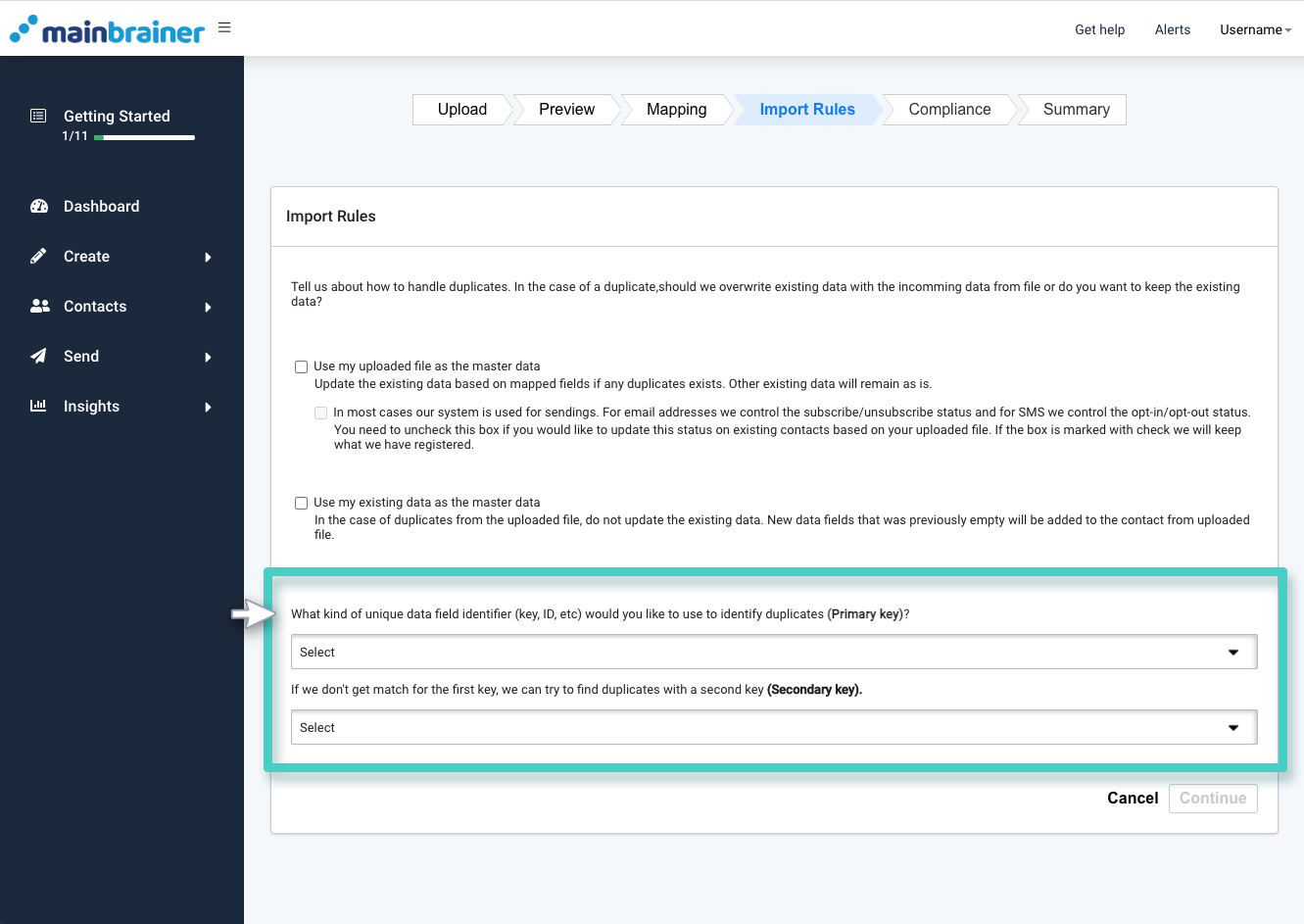
Primary key – It is the field that uniquely identifies a record in the CRM. This key will be used to identify if a record is a duplicate at the time of import. It is mandatory to select a primary key for executing an import.
Secondary key – You can also specify a secondary key for determining duplicate entries. In case you specify a secondary key, it will be used for determining duplicates in case no duplicate matches are found with the primary key.
Click Continue to proceed.
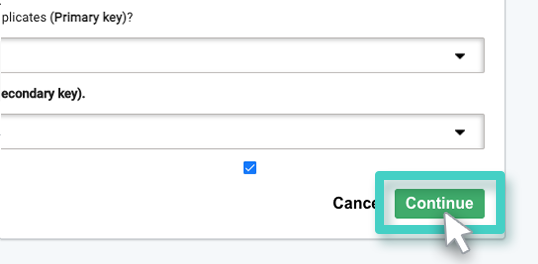
Step 5
Accept Compliance Conditions
On the Compliance screen, you need to confirm that you have read and understood the GDPR and TCPA regulations for sending SMS and Emails to people in the EU and US.
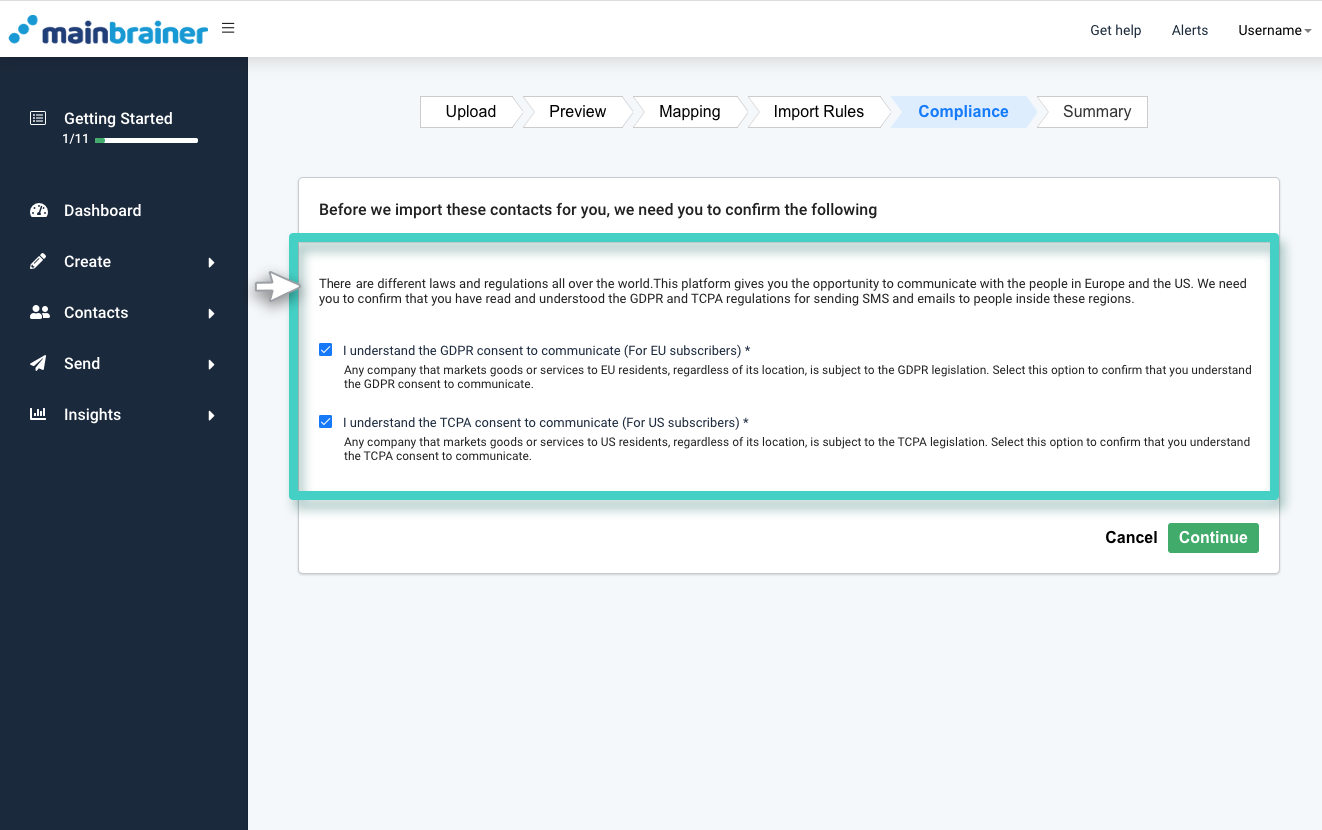
Step 6
Review Import Settings
The next screen will summarise all the settings you have chosen for the import. Review the settings and click the Import button at the bottom of the Import Summary to execute the import.
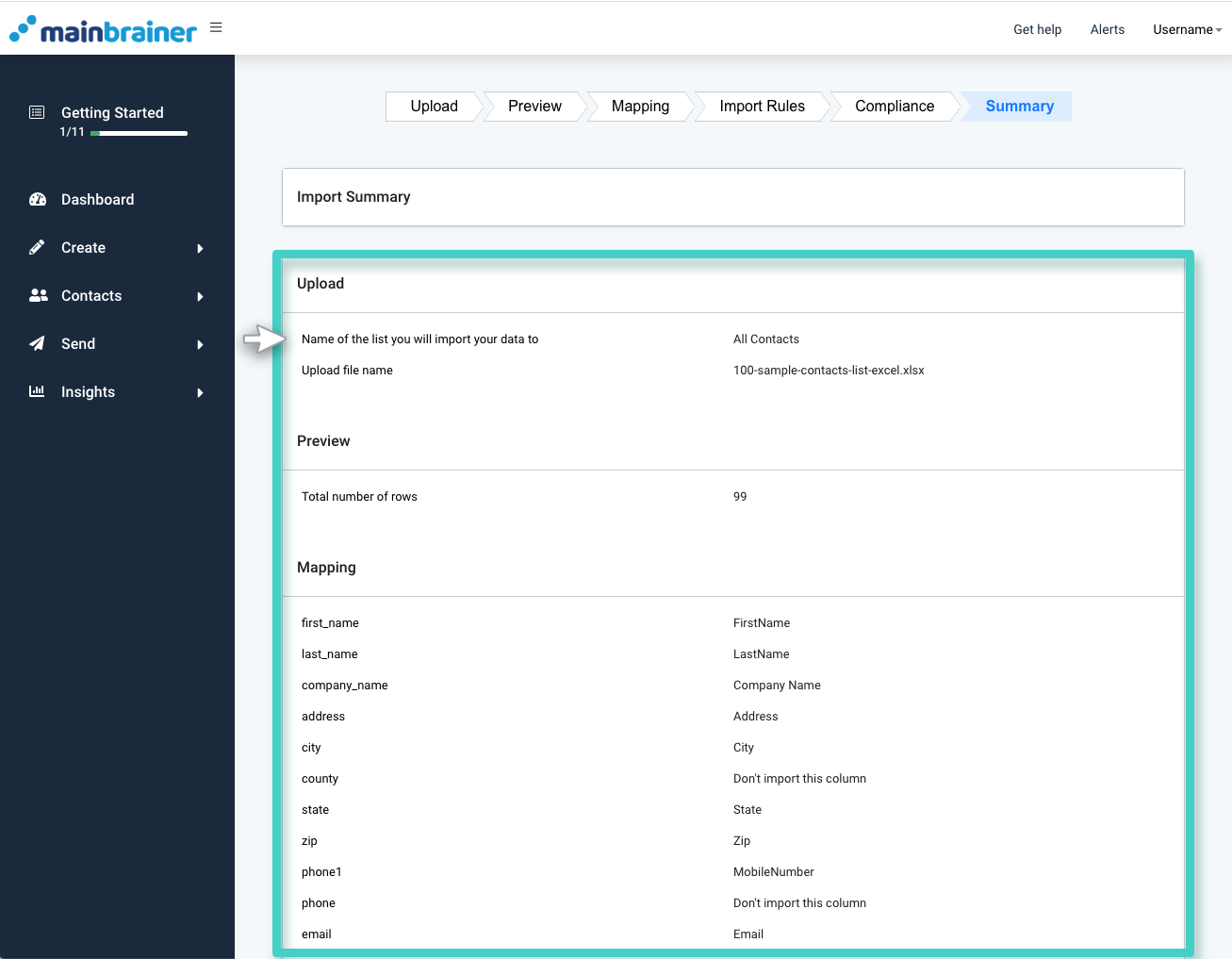
As the import starts, it will be displayed under the Draft tab (as highlighted in the screenshot below):
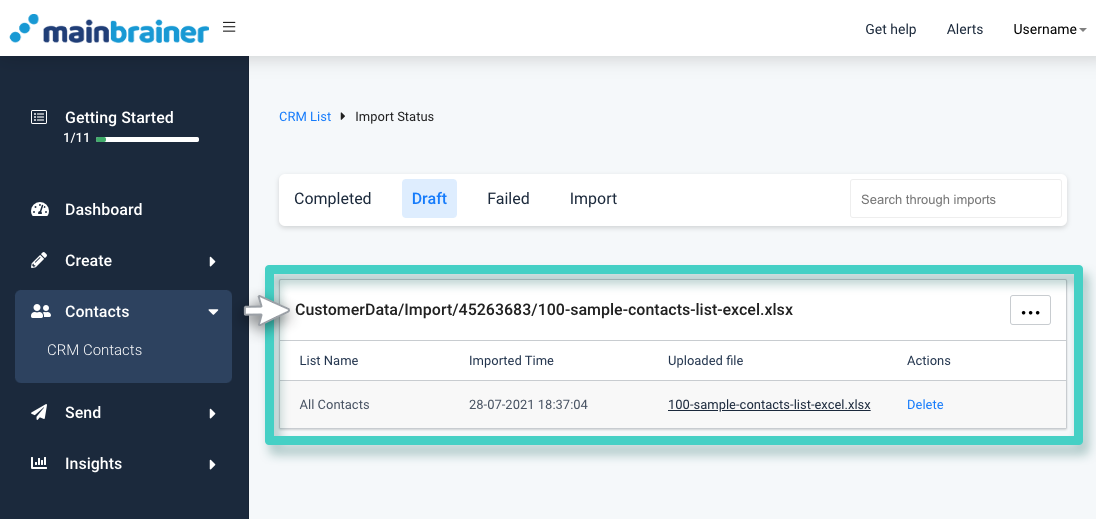
Once the import is successfully completed, it will be visible under the Completed tab. In case the import failed, it would be visible under the Failed tab along with the reasons behind the failure.
